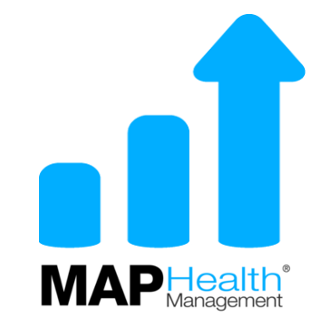The Science of Recovery
January 27, 2017 Dr. Thomas G. Kimball, Ph.D., LMFT
Published in The Recovery Revolution, January 27th, 2017. View the Article Here
 Understanding the science of how individuals stay clean and sober is the keystone knowledge to reversing the addiction epidemic in American and indeed, across the world.
Understanding the science of how individuals stay clean and sober is the keystone knowledge to reversing the addiction epidemic in American and indeed, across the world.
According to the National Institute on Drug Abuse, as many as 600,000 people die from alcohol and drug use each year(1). America has lost too many of our family members and friends who suffer from this devastating disease. The science of recovery offers hope to the many people who suffer and to those who love them.
While we still have much to learn, alcohol and drug addiction research continues to make significant strides. Most promising within this still vastly unknown scientific field are two distinct efforts: recovery brain studies and providing post-treatment extended recovery support networks. While the cognitive aspects seem the most scientific, so too, are the intricacies of using scientific methods to unlock effective and lasting post-addiction programs which not only benefit the individual and their immediate circles but society as a whole by reducing the negative economic strains on local governments.
1. Recovery Brain Studies
Recovery brain studies have the potential to help us understand what changes occur in a person’s brain while undergoing prolonged recovery. Typically, brain studies in addiction have made use of Magnetic Resonance Imaging or MRIs. These studies have yielded a tremendous amount of knowledge about the structural and functional changes addicts and alcoholics experience. These changes are responsible for individuals compulsively using despite the tremendous consequences.
However, using MRIs for these studies is expensive and cumbersome. Modern technology promises new machines capable of looking further into the brain. They are less expensive and can be brought to the location of study participants. For example, I and some dedicated colleagues conducted a study revealing an objective biological marker within the brain (2). We made use of the less expensive Functional Near Infrared Spectroscopy or fNIR. fNIR devices attach to the forehead and provide cognitive cues that may prove to be a highly effective technique in assessing brain reactivity to alcohol and other drugs.
In this preliminary study, we explored 15 individuals who identified as alcoholics in recovery. Recovery times ranged from 1 month to 10 years. While being connected to the fNIR device, these participants were shown a variety of images ranging from pleasant to unpleasant. After these baseline images were viewed, they then were shown alcohol-related images such as beer or liquor. During this exercise, reactivity or lack of thereof, brainwaves were measured in the pre-frontal cortex, the behavioral response of our brains controlling executive functioning and our ability to regulate behaviors.
Our results suggest people who have been in recovery longer are less reactive to alcohol images in the prefrontal cortex than someone who has less time spent in recovery. Or in other words, the more time an individual has in recovery, the less anxious and more certain, in a positive way, their response is to alcohol-related images.
The findings are incredibly hopeful and, over time and more studies, can shed greater light on how the brain heals and changes post-addiction.
2. Providing Extended Recovery Support
Short-term recovery models, such as a 28-day treatment program, has proven to be relatively unproductive in reducing recidivism rates. Long-term treatment programs have yet to gain traction due to the absence of data showing the potential utility and effectiveness comparative to the investments made.
Addiction and recovery professionals must advocate for extending care and support for 12-18 months after treatment has ended. The added benefit of providing this kind of support is the potential to learn more, through the scientific analysis of data gathered indicating why people stay in recovery and when they are at the most risk for relapse.
In a recent authoritative report conducted with data gathered by MAP Heath Management, Dr. Kerby Stewart and I report many people in recovery will participate in a program of support for 12 months post-treatment (3).
“Overall Retention Rates for Participants in the MAP Care Solutions program were remarkable. It is generally held that addiction treatment facility alumni retention rates range from 5% to 8% at six or more months. However, with regard to MAP Care Solutions, 90% of participants remained in contact with a MAP Peer Recovery Support Specialist at 30 days, 68% remained in contact at 90 days and 53% remained in contact at six months. Finally, 35% of individuals who started with MAP Care Solutions completed the 12-month program.”
Although these numbers do show a decline over time they are incredibly hopeful for extending recovery support. This authoritative report also shows evidence that people in recovery are not only willing to participate in support programs but to also receive meaningful care through these types of programs.
“Of the total number of individuals who started with MAP Care Solutions (including those who did not complete the program), the average number of Meaningful Sessions per participant was 26. Of those participants who were actively enrolled in the program at 12 months, the average number of meaningful sessions was 43.”
This means that those who stayed in the program for 12 months had meaningful contact with a peer advocate an average of 3.58 times a month. That’s a lot of contact and support provided. For this study, a meaningful support session was defined as a conversation with a peer recovery support specialist where data was gathered and the conversation is emotionally rewarding, educationally rich, and engaging.
In summation, the science of recovery has the potential to provide important guidance and direction in how to help people find and maintain their addiction recovery. Recovery brain studies, as well as data gathered through recovery support programs over time, are most promising in changing the course on the addiction epidemic.
REFERENCE:
- National Institute on Drug Abuse for Teens. https://teens.drugabuse.gov/national-drug-facts-week/how-many-people-die-each-year-drug-usage
- Dempsey, J.P, Harris, K.S., Shumway, S.T., Kimball, T.G., Herrera, J.C., Dsauza, C.M., & Bradshaw, S.D. (2015). Functional near infrared spectroscopy as a potential biological assessment of addiction recovery: Preliminary findings. The American Journal of Drug and Alcohol Abuse, (0), 1-8.
- Stewart, K., & Kimball, T.G. (2016). Post-treatment recovery support. The future of long-term recovery from addiction. MAP Health Management.








